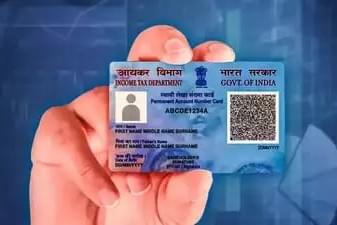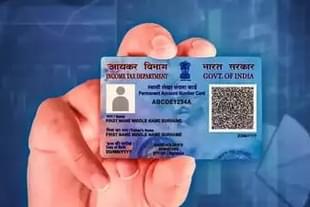News Brief
Your PAN Card Is Set To Be Upgraded With Modi Government's Rs 1,435 Crore Initiative—Here's All You Need To Know
Vansh Gupta
Nov 26, 2024, 05:38 PM | Updated 05:38 PM IST
Save & read from anywhere!
Bookmark stories for easy access on any device or the Swarajya app.


On Monday (25 November), the government introduced the Rs 1,435 crore PAN 2.0 initiative aimed at transforming the Permanent Account Number (PAN) into a ‘common business identifier’ across all digital systems of government agencies.
The project seeks to streamline identification by merging various existing numbers into PAN, creating a unified system for businesses. Let's understand what the intricacies of the PAN 2.0 are.
What changes are coming to PAN cards?
The 10-digit alphanumeric PAN, issued by the Income Tax Department, will incorporate a QR-code feature on both new and existing cards. This digital enhancement will improve accessibility and enable seamless integration with other systems. The upgrade also ensures a fully online application process, reducing paperwork.
Why was the PAN 2.0 Project launched?
“There were repeated demands from the industry for a common business identifier to replace multiple identification numbers. This project aims to merge PAN, TAN, and TIN into a single unified system,” Union Minister Ashwini Vaishnaw stated.
The initiative responds to businesses' need for simplification and serves as a more robust source of identification, further strengthened by PAN’s linkage with Aadhaar.
What are the main features of PAN 2.0?
1. QR-Code Integration: Both old and new PAN cards will feature QR codes for better integration of financial transactions with tax systems.
2. PAN Data Vault: A mandatory data vault system will be introduced to ensure secure storage of PAN-related information. Entities like banks and insurance companies, which frequently access PAN data, will be required to adopt this system to enhance cybersecurity.
3. Unified Portal: A centralized online platform will facilitate seamless operations, including the issuance and management of QR-enabled PAN cards.
How will this impact individuals and businesses?
Current PAN holders will not be required to change their PAN numbers, but they can opt for the upgraded QR-code-enabled PAN cards. The new system will allow for paperless submissions and faster processes. For businesses, PAN 2.0 simplifies compliance by unifying multiple identifiers, making the system more efficient.
Existing PAN holders can regenerate their cards with QR codes through an online process. Enhanced security and integration will ensure smoother financial transactions and tax filing.
What are PAN and TAN, and how will they change?
PAN (Permanent Account Number): A 10-digit alphanumeric identifier linked to a person’s financial transactions, tax payments, and returns. Once issued, it remains valid for a lifetime.
TAN (Tax Deduction and Collection Account Number): A 10-digit number issued for entities responsible for deducting or collecting tax at the source. Under PAN 2.0, these identifiers will be unified, making PAN the primary number for all tax-related purposes.
Will your current PAN card become invalid?
No, your existing PAN card and number will remain valid. The upgraded system will integrate seamlessly with old PANs, ensuring no disruption.
Is there a cost for upgrading to PAN 2.0?
The upgrade will be completely free of cost. All taxpayers will receive the upgraded QR-enabled PAN cards without any additional charges.
Do you need to apply for a new PAN card?
No. While current PAN holders can choose to upgrade their cards for the new features, it is not mandatory, as their existing cards will remain functional.
Vansh Gupta is an Editorial Associate at Swarajya.





